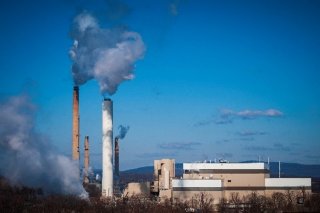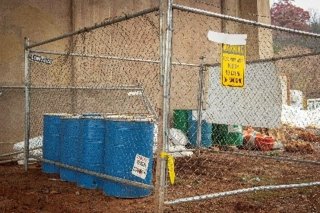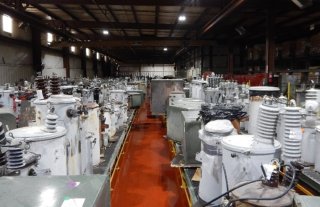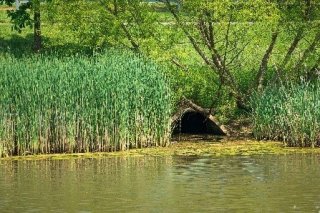EPA Permit Programs and Corresponding Environmental Statutes
EPA works to ensure compliance with several environmental statutes that are the basis for our nation’s environmental permitting programs. These permitting programs protect air quality, land resources (including groundwater), waters and water resources (including the marine environment and wetlands) and address environmental topics such as hazardous waste management. Some of these permit programs have been delegated, approved or authorized (entirely or in part) to tribal, state, territory and local agencies, though EPA retains federal oversight and/or enforcement authority.
EPA also administers or participates in other regulatory programs which provide environmental licenses, certifications or permits. A more comprehensive list of EPA-related laws and regulations is available. EPA recommends that potential permit applicants reach out to the relevant EPA headquarters or regional office or state permitting authority, as appropriate, for additional information on permitting requirements.
On this page:
- Air
- Hazardous Waste Management
- Marine Resources
- PCB Cleanup and Disposal
- Safe Drinking Water
- Waters Including Wetlands
Air

The Clean Air Act (42 U.S.C. §7401 et seq. (1970)) is the comprehensive federal law that regulates air emissions from stationary and mobile sources. Congress designed it to protect public health and welfare from different types of air pollution caused by a diverse array of sources.
- CAA Title V Operating Permit Program - These permits apply to stationary pollution sources, such as industrial and commercial facilities. Permits identify and incorporate all CAA requirements that are applicable to individual facilities (e.g., emissions limitations for an industry category) and may enhance monitoring and reporting requirements.
- New Source Review Permit Program - These permits cover construction of new stationary sources of air pollution and modifications to existing sources that increase emissions (e.g., fossil-fueled power plants and industrial facilities).
- Outer Continental Shelf Air Permit Program - These permits establish air pollution control requirements for emissions sources located offshore on the OCS. Most permits are for oil and gas projects and more recently offshore wind farm installations.
CAA permits are issued through EPA regional offices or delegated to state, territory, local or tribal authorities for issuance. Find more information on EPA’s Permitting under the CAA page.
Hazardous Waste Management

The Resource Conservation and Recovery Act (42 U.S.C. §6901 et seq. (1976)) requires EPA to establish a framework for the proper management of hazardous and non-hazardous solid waste for the protection of human health and the environment. Subtitle C of the RCRA regulations (Title 40 CFR parts 260-279) sets criteria for hazardous waste generators and transporters, and treatment, storage and disposal facilities. Under RCRA, Congress allows EPA to authorize states to assume primary responsibility for implementing the hazardous waste regulations. A state that has received final authorization from EPA, known as an authorized state, implements and enforces its own hazardous waste regulations. Authorized state regulations act “in lieu of” federal regulations; however, EPA retains its federal enforcement authorities. EPA directly implements the hazardous waste requirements in states and territories that are not authorized to implement the program and in Indian country.
- RCRA Permit Program - All facilities that treat, store, or dispose of hazardous wastes must obtain a RCRA permit. A RCRA permit establishes the waste management activities a facility can conduct and the conditions under which it can conduct them in a protective manner, including facility design and operation, safety standards and facility performance. RCRA Subtitle C permits are issued either by EPA regional offices or authorized states and territories. Find more information on the Hazardous Waste Permitting in Your State page.
Marine Resources

The Marine Protection, Research and Sanctuaries Act (33 USC §1401 et seq. (1972)) regulates the disposition and transportation of material in the ocean, subject to limited exceptions. Under MPRSA, ocean waters begin at the baseline of the territorial seas and extend seaward. The baseline is the ordinary low water mark and closing lines, which are dividing lines drawn on nautical charts across open bodies of freshwater such as a river, bay or harbor. MPRSA prohibits or restricts the disposition of materials that would adversely affect human health, welfare, amenities, the marine environment, ecological systems or economic potentialities.
- MPRSA Permit Program - EPA and the U.S. Army Corps of Engineers share regulatory responsibility for ocean dumping of dredged material, including permits, while EPA issues permits for all other MPRSA-regulated materials. All MPRSA permits for dredged material and federal projects involving dredged material are issued by USACE and are subject to EPA review and written concurrence. USACE uses EPA’s environmental criteria to issue its MPRSA permits for dredged materials. For other materials, EPA may issue emergency permits, research permits, general permits, and special permits. MPRSA permits are authorized by EPA and are not delegated to tribes, states, or territories. Find more information on EPA-issued MPRSA permits, such as general permits, which include burials at sea, and ocean disposal of vessels disposal, and marine mammal carcasses, as well as research permits and emergency permits on the MPRSA permit page. For questions about MPRSA permits, please contact the EPA Region or Headquarters primary contact listed on the Marine Protection Permitting Program contact page.
PCB Cleanup and Disposal

The Toxic Substances Control Act (15 U.S.C. §2601 et seq. (1976)) addresses the production, importation, use and disposal of specific chemicals, including polychlorinated biphenyls. PCBs are toxic chemicals that would pose a risk to communities if improperly managed or controlled. TSCA gives EPA authority to ensure the safe cleanup and disposal of PCBs.
- PCB Cleanup and Disposal Program - This program benefits communities by ensuring that sites contaminated with PCBs are cleaned up to reduce risks and by ensuring that materials contaminated with PCBs are safely managed and disposed of in landfills or destroyed in other types of waste management units. EPA does this through the implementation of TSCA section 6(e), which imposes prohibitions on and requirements for the manufacturing, processing, distribution, use and disposal of PCBs through PCB regulations (Title 40 CFR part 761). In addition, EPA issues approvals similar to permits to facilities that are engaged in specific types of PCB cleanup, disposal and storage activities. This also includes site-specific risk-based approvals to decontaminate, store or dispose of PCB waste in a manner other than what is prescribed in the regulations. The PCB Cleanup and Disposal program approvals are issued by EPA regions and headquarters, as the PCB program is not delegated to states, territories or tribes.
Safe Drinking Water

The Safe Drinking Water Act (42 U.S.C. §300f et seq. (1974)) allows EPA to set the standards for drinking water quality and monitors states, local authorities and water suppliers who enforce those standards. The objective of SDWA is to protect public health by regulating the nation's public drinking water supply.
- Underground Injection Control Permit Program - EPA administers this program to protect drinking water from pollution related to subsurface injection. Regarding infrastructure, some types of injection wells may be needed for mining, critical mineral development, oil and gas development, or carbon sequestration projects. UIC permits are issued through EPA regional offices or delegated to state, territory, and tribal agencies depending on the UIC permit class needed. The "UIC Where you Live" section on the UIC Permitting Program page provides further information.
Waters Including Wetlands

The Clean Water Act (33 U.S.C. §1251 et seq. (1972)) establishes the basic structure for regulating discharges of pollutants into waters of the United States and regulating quality standards for surface waters.
- CWA Section 402 National Pollutant Discharge Elimination System Permit Program – The NPDES permit program regulates facility discharges into waters of the U.S. The program issues individual (facility-specific) and general (multiple dischargers) permits to ensure that discharges meet federal and state water quality standards. NPDES permits are issued under one or more of the NPDES program areas, through EPA regional offices or by a state, territory or tribal authority. Find more information on the NPDES Program State Permitting page.
- CWA Section 404 Permit Program - Section 404 of the CWA regulates the discharge of dredged or fill material into waters of the U.S., including certain wetlands. EPA jointly administers this program with USACE, except where EPA has approved a tribal, state or territory request to assume the program. EPA provides guidance and policy development, determines the scope of geographic jurisdiction, reviews and comments on potential permit actions and mitigation proposals, conducts enforcement, approves and oversees tribal and state 404 programs, and can prohibit, deny or restrict an area’s use as a disposal site. USACE issues 404 permits, except where EPA has approved a tribal or state request to assume and administer the program and issue permits. Find more information on the Section 404 Assumption page.
- CWA Section 401 Water Quality Certification - Under Section 401 of CWA, a federal agency may not issue a license or permit to conduct any activity that may result in any discharge into waters of the U.S. unless the authorized tribe or state where the discharge originates either issues a Section 401 water quality certification or waives certification. All U.S. states and territories, and tribes with treatment in a similar manner as a state for Section 401 act as certifying authorities (i.e., grant, deny, or waive 401 certifications). Where states, territories, or tribes do not have authority to give certification, EPA acts as the certifying authority. Currently, EPA acts as the certifying authority in two scenarios: (1) on behalf of tribes without treatment in a similar manner as a state for Section 401 and (2) on lands of exclusive federal jurisdiction in relevant respects.
